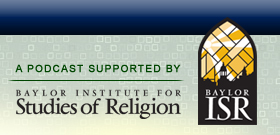

|
Gary Laderman on Resting in Peace: The Death Industry in American History  Date: October 26th, 2014
 Death is one of the realities of life, but how we view death and partake in funerals has changed over time. Prof. Gary Laderman, chair of the Department of Religion at Emory University, takes us on a two-century tour of how Americans have dealt with death, including the interesting rise of the “death industry.” As we typically do, the interview starts with a bit of background to Prof. Laderman. He indicates some of his favorite horror films and then discusses how he came to study the topic of funerals in American history, first examining death in the 19th century in his first book The Sacred Remains and then the sequel to this work, Rest in Peace. The discussion of how death and funerals have been conceived of in American history begins with an examination of George Washington’s passing. Prof. Laderman contrasts the pageantry and reverence given to our first president with what became of a man who committed suicide around the same time. The latter’s body was used for dissection, which at the time was not something that was widely discussed. We also cover the typical process of funerals in America at this time, which often occurred at home, particularly in rural areas. The next pivotal moment in the death industry came following the assassination of Abraham Lincoln. While this event was momentous for the nation in many other aspects (cf. Sean Scott’s podcast on religious rhetoric in the Civil War), the drawn out funeral and viewing of Lincoln’s body brought attention to a rather new technology that was set to change the death industry in the U.S. — embalming. With the rise of embalming, we see the creation of professional specialties such as the undertaker (or mortician). And much like ancient guilds, this funeral business industry begins to develop professional societies, codes of ethics, and training schools. While it begins as mostly a family business, with undertakers often using their own abodes as “funeral homes,” eventually it develops into the form that we know it today, taking the practice away from an individual’s home. Gary points out later in the interview that over the past century dying tends to occur in hospitals and is segregated from the land of the living. Tony asks about whether or not the 20th century experience with wartime mass casualties and the increasing visibility of these deaths via television (particularly with the Vietnam War) have any impact. Gary doesn’t believe that had a significant impact noting that these were still individuals dying on the battlefield and their funerals were still a personal matter for families. However, he does note that in 1963 the publication of Jessica Mitford’s The American Way of Death, an exposé of the death industry, impacted the national conscience. As a New York Times bestseller, we see how this book shifts attention away from the casket burial and towards cremation over the next several decades. He also notes regional variation with the West and urban areas relying on cremation much sooner, whereas the South tended to lag behind in this trend. He also notes a few other recent developments in the 21st century including the popular YouTube series “Ask a Mortician.” We finish with some of Gary’s thoughts on what he has learned over the course of his study of this topic, as well as how his views have changed as he grows older. Recorded: October 17,2014. RELATED LINKS Prof. Gary Laderman’s bio at Emory University. The Sacred Remains: American Attitudes Toward Death, 1799-1883, by Gary Laderman. Rest in Peace: A Cultural History of Death and the Funeral Home in Twentieth-Century America, by Gary Laderman. Sacred Matters: Celebrity Worship, Sexual Ecstasies, the Living Dead, and Other Signs of Religious Life in the United States, by Gary Laderman. American Civil Religion, an e-book by Gary Laderman. Sacred Matters, Prof. Laderman’s new online journal project. Religion Dispatches, an online journal founded by Prof. Laderman. The King’s Two Bodies, by Ernst Kantorowicz (mentioned in podcast). The American Way of Death, by Jessica Mitford (mentioned in podcast). “Ask a Mortician,” a YouTube Series (mentioned in podcast). RELATED PODCASTS Sarah Bond on the Church and Funerals in Late Antiquity. Chris White on Debunking Ancient Aliens. Chris Bader on Ghosts, UFOs, and the Paranormal. Sean Scott on Religious Rhetoric in the US Civil War.
4 Responses to “Gary Laderman on Resting in Peace: The Death Industry in American History”Leave a Reply |
 Search The Podcast
To search the podcast, type a term and click the Search button.
  Browse Podcast Categories
Select a category below to browse the podcast:
   |















[…] Gary Laderman on Resting in Peace: The Death Industry in American History. […]
[…] Gary Laderman on Resting in Peace. […]
[…] Gary Laderman on Resting in Peace: The Death Industry in American History. […]
[…] Gary Laderman on Resting in Peace: The Death Industry in American History. […]